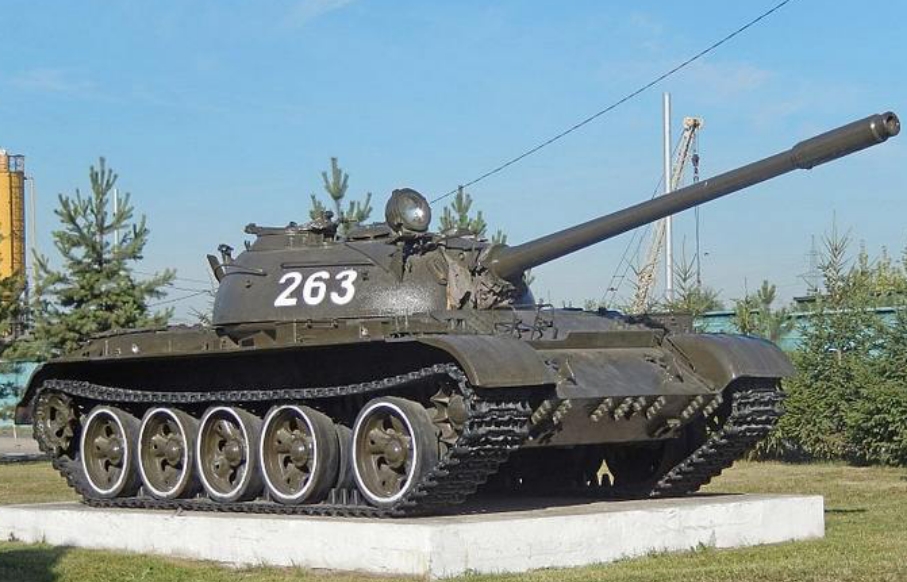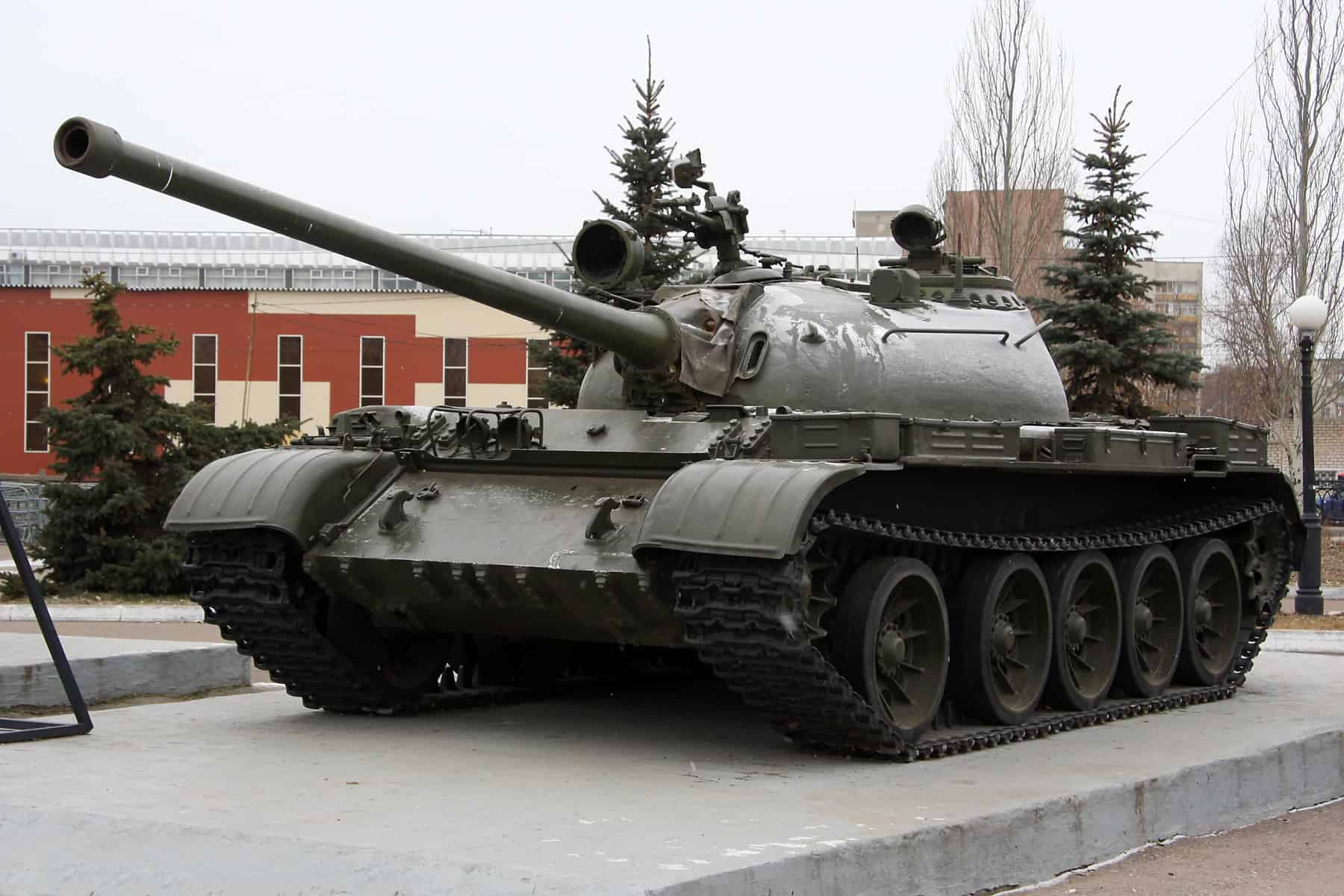
In early July, a video capturing the echelon with Т-54/55 tanks in the Voronezh region of the Russian Federation was released.
Behind the scenes, the Russians were outraged and sad because “the new tanks were over.” Also, some of the vehicles were also strangely painted.
Ukrainians also mock these outdated tanks. But is it worth laughing at them in 2023?
Militarnyi discusses these Soviet tanks and considers ways to use them in the war against Ukraine.
Russia is forced to arm its invasion troops with these tanks due to significant losses of modern armor and to increase the firepower of its forces.
The Soviet Т-54 medium tank was developed and adopted in 1946. The serial production of the vehicle started in 1947. Several defense plants of the USSR, as well as in other countries, produced the tank. During the production, the tank was improved, and new modifications were created. The last tanks were produced in 1959.
In its base version, of which more than ten thousand were produced in the USSR, the tank had a crew of four people and was armed with a D10-T 100mm rifled gun. A 7.62mm machine gun was paired with it.
Also, two bow machine guns were installed above the left and right tracks. A driver conducted fire from these machine guns. Weapons loading was executed outside the vehicle. To aim machine guns at the target, the tank was turned. In addition, a DShK 12.7mm machine gun was installed on the roof of the turret.
A driving compartment, where the driver was placed on the left, and fuel tanks and ammunition rack on the right behind the longitudinal partition were positioned in the bow of the hull.

The fighting compartment occupied the middle part of the tank hull. It contained a turret, which housed a tank gun, sight and vision devices, part of the ammunition, and communications. The positions of the gunner and tank commander are located to the left of the D10-T gun, and the loader is to the right.

The tank’s ammunition includes 34 rounds for 100mm guns, located in special racks in the tank’s hull and turret. 20 rounds are stored in the bow of the hull, and the rest are in the combat compartment.
The engine compartment, separated by a partition, is behind the combat compartment in the aft part of the tank. It houses the engine and systems that ensure its operation, as well as the transmission.
The nose of the hull is welded from the top and bottom 120 mm thick armor plates. The sides of the hull have a 80 mm thickness.
The turret of the Т-54 tank was cast of armored steel. The thickness of the spherical frontal part reached 200 mm, and on the sides, it is between 160 and 125 mm. The upper part of the turret was 30 mm thick.
The turret design featured reverse bevels, the so-called shot traps in its lower part. This led to the appearance of weakened zones of the tank hull part’s armor protection under the turret, where shells could ricochet and penetrate thinner armor. This design was necessitated by the need to open the cover of the driver’s hatch cover at any position.

During mass production, the vehicle underwent changes, and the disadvantage was corrected by installing a turret of a different shape during the development of new modifications. Changes in the turret design led to a change in the shape of the driver’s hatch and the location of the gun rounds.
The Т-55 tank is an upgraded version of the Т-54B tank. The Soviet Army adopted it in 1958. The vehicle has the same layout as the Т-54.
A turret housing the tank commander, a gunner (to the left of the gun), and a loader (to the right of the gun) is located in the fighting compartment. The D10-T2S 100mm tank gun stabilized in two planes is the main armament. A 7.62mm machine gun was paired with it.
The tank could also fire from an indirect-fire position. For this, a side level and an azimuth pointer were used.
The range of grazing shot at the target with a height of 2 m with an armor-piercing projectile was 1080 m, and 1100 m with high-explosive fragmentation. The top aiming range with a telescopic sight was 6900 m, and up to 14,600 m with the help of a side level.
The gun ammunition consists of 43 rounds with armor-piercing, high-explosive, and HEAT rounds. The Т-55 tank was later also armed with a DShKM anti-aircraft heavy machine gun.

The tank’s hull is welded from steel armor plates of various thicknesses. The front of the hull was 100 mm thick. The tank’s turret was cast with variable thickness armor of up to 200 mm in the frontal part.
In March 2023, the Conflict Intelligence Team published photos of the echelon, which was transporting Soviet Т-54/55 medium tanks from the Far East. The echelon consisted of both Т-54 tanks and possibly late Т-54 or Т-55 tanks.
According to the CIT, this echelon departed from the city of Arsenyev, Primorsky Krai, where the 1295 Central Reserve and Storage Base of tanks of the Russian army station is located.

The photo captures that the tanks do not have additional protection, at least in the form of Kontakt-1 ERA.
Already in April 2023, Russian invasion troops in Ukraine started receiving the depreserved Т-54 and Т-55 tanks.

Then the invaders claimed that these tanks were in the occupied areas of the Zaporizhzhya region of Ukraine.
However, at that time, it was unclear whether these tanks were participating in hostilities, or whether they were the first vehicles of this type that had just entered service with the Russians.
It should be noted that after the collapse of the USSR, large numbers of Т-54/55 tanks were on the balance of the Russian army. At the same time, the last Т-55 were withdrawn from service in 2010.
Recently, new images of the movement of the Т-54/55 tank echelon on the territory of the Russian Federation were posted on social media. This demonstrates that the invaders continue depreserving these tanks for use in the war against Ukraine.
It can be assumed that the Russians can use these tanks not only for their intended purpose, that is, as a “classic” tank in the offensive or defense. Т-54/55 might have been needed to increase the firepower of the invasion forces to try to stop the offensive operations of the Ukrainian Defense Forces.

Russians, in particular, can use them as self-propelled guns to fire from indirect-fire positions. They could have made such a decision after losing a significant amount of barrel artillery on the battlefield.
It is common for tanks to launch direct or semi-direct fire at targets that the vehicle’s gunner observes through sighting devices. Thus, enemy targets are usually hit at a maximum distance of up to 4 to 5 kilometers from the tank.
However, the tank can also hit targets that are not visually spotted. This method of shooting is called “firing from an indirect-fire position.” This is artillery fire against targets not in the line of sight.
For this purpose, the tanks use high-explosive rounds that have a range of over 10 km. To aim at such long ranges, special guidance devices are used, namely side level and azimuth pointer.
Before the full-scale Russian invasion, the Ukrainian military already had experienced using tanks to fire from indirect-fire positions.
In particular, Come Back Alive, the Foundation for Competent Assistance to the Military, has been training the Ukrainian military to launch fire from closed positions since September 2015 using the ARMOR software.
As of the summer of 2022, the organization’s specialists transferred thousands of tablets with this software to the troops, preparing hundreds of crews of armored fighting vehicles, tanks, anti-aircraft installations, and artillery crews.
During the full-scale war with Russia, such tactics are actively used on the battlefield. This is due to the fact that tanks often cannot go on direct fire to make a shot.
This makes Ukrainian tank crews unable to fire enemy tanks and anti-tank weapons, which are the main threat to this type of armored vehicle during classic operations.
After launching a full-scale invasion, the Russians also started to actively use this firing method from their tanks.
Andrii Tarasenko, the tank history researcher, gave his assessment of the Russians using Т-54 and Т-55 tanks.
He believes that this is a forced measure caused not only by a lack of tanks but also by the “ammunition hunger.”
“The peculiarity of using the tanks at this stage is the use of indirect-fire positions without direct visual contact on the target,” Tarasenko said.
According to him, the 100mm rifled gun on these tanks is not only as good as the 125mm but even better due to its accuracy.
“On the other hand, the operation of Т-54/55 in the Russian Federation, even in the reserve bases, ended over 10 years ago. There are no people able to provide quality training to operate Т-54, as for many decades, no one has been trained with these tanks,” he said.
Tarasenko noted that Т-54/55 tanks plan to replace the Т-62s, which were previously supposed to be used as ersatz self-propelled guns.
Earlier, according to him, the Russian army tried to use Т-62 as ersatz self-propelled guns for indirect fire with crews reduced to three people: “and now we see a different picture – a full-fledged crew of four people.”
“The features of the war show the atypical distribution of hits to the tank, primarily the redistribution of lesions to the upper hemisphere and sides. Here, the Т-54/55 is not inferior to modern Т-72 and Т-80 tanks.
And due to the significantly lower fire hazard of a unitary round with a metal cartridge, it will even exceed (modern Russian tanks – ed.) in survivability in case of penetrated armor,” Andrii Tarasenko shared.
However, he noted that at the front, the Т-54/55 are vulnerable to any available anti-tank ammunition.
The appearance of a large number of tanks, albeit outdated, may be due to the need for Russians to saturate the defense line in the occupied territories with armored vehicles. The tanks are supposed to support Russian units with fire.

After all, Т-55 tanks have the ability to fire from indirect-fire positions, and with the beginning of a full-scale invasion, the Russians started to actively use this method with these tanks.
The ability to use tanks as artillery pieces and the availability of a significant amount of ammunition for them in Russian warehouses could create certain problems for Ukrainian forces currently conducting offensive operations to liberate the occupied territories, as now, Russia will be able to increase the number of attacks on Ukrainian positions. And Ukrainian troops, in turn, will be forced to spend their resources to destroy these Russian tanks.
Підтримати нас можна через:
Приват: 5169 3351 0164 7408 PayPal - [email protected] Стати нашим патроном за лінком ⬇
Subscribe to our newsletter
or on ours Telegram
Thank you!!
You are subscribed to our newsletter